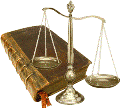Law, College of

Nebraska College of Law: Faculty Publications
Document Type
Article
Date of this Version
2008
Abstract
Two books published in 2006 provide a compelling portrait of the "boom and bust" cycles that have plagued the Great Plains since European settlement. The Worst Hard Time: The Untold Story of Those Who Survived the Great American Dust Bowl and Ogallala Blue: Water and Life on the High Plains stand beside Mark Reisner's classic study of western water resources, Cadillac Desert, and Wallace Stegner's tribute to one of America's greatest conservationists, Crossing the Next Meridian: John Wesley Powell and the Second Opening of the West, as "must read" books for anyone who cares about the future of the American West, particularly the Great Plains.
New York Times reporter Timothy Egan gives voice to the survivors of the Dust Bowl in The Worst Hard Time: The Untold Story of Those Who Survived the Great American Dust Bowl. Egan covers the region most affected by the Dust Bowl, from the Texas and Oklahoma panhandles to southeast Colorado, Kansas, and Nebraska. His retrospective, constructed from interviews, journals, and newspaper accounts, depicts how drought, together with improvident agricultural and settlement policies and the Great Depression, combined to impose "the nation's worst prolonged environmental disaster."
Meanwhile, in Ogallala Blue, William Ashworth, an environmental historian, provides a collection of contemporary case studies set in various places throughout the Great Plains region. Through his vivid portrayals of local landscapes and the individuals that populate them, Ashworth captures the deep-rooted sense of place of Great Plains communities. Their stories are deftly interwoven against a backdrop of geologic time and scale, situated (precariously, in some cases) above the vast Ogallala (High Plains) Aquifer. He demonstrates the importance of "this bounty of buried water" to residents as well as the nation at large. The fourteen million acres of crops overlying the aquifer comprise over one-fifth of the total annual harvest in the United States, and the vast majority of those crops rely on groundwater for irrigation. Ashworth explores the billion dollar questionwhat will happen to the crops and the people who rely on them when the Ogallala Aquifer goes dry, as portions of it are likely to do within our lifetimes.
This Article reviews The Worst Hard Time and Ogallala Blue, situating their stories within the context of American law governing western settlement, agriculture, and soil and water management. In the wake of the Dust Bowl, federal, state, and local laws evolved and began to require more sustainable farming practices to control soil erosion. This evolution, and the events that fostered it, are described in Part I, below. Part II considers the post-World War II reliance on groundwater pumping to irrigate crops in the-Great Plains region, as described in Ogallala Blue, and the law's tepid response to overdraft and its adverse effects. Finally, in Part III, the Article turns to the latest economic boom-ethanol production-and assesses its implications for the Great Plains and its human and natural communities. The Article concludes that the recently adopted federal Energy Bill, which requires increased reliance on biofuels, particularly corn-based ethanol, raises the specter of another "boom and bust" for Great Plains soil and water resources-déjà vu all over again.


Comments
Zellmer in Creighton Law Review (2008) 41. Copyright 2008, Creighton University. Used by permission.